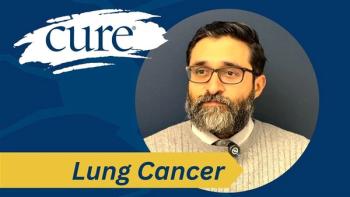
Comprehensive Genomic Profiling in Lung and Thyroid Cancer
Drs Benjamin Levy and Lori J. Wirth describe how they currently utilize comprehensive genomic profiling to manage patients with non–small cell lung cancer or thyroid cancer.
Episodes in this series

Hossein Borghaei, DO, MS: Dr Levy, maybe we can talk a little about this concept that we face in lung cancer—I’m not excluding any other malignancies, but we’re more familiar with lung cancer—of doing a comprehensive test as opposed to the one-off testing that we did in the beginning when there were only one or two markers. What are your views on this? I’m going to ask Dr Wirth the same question: How do you guys do it at your centers? Is it a centralized lab, is it in-house, or do you send it out? What do you do?
Benjamin Levy, MD: This is a great question because the diagnostic algorithm is shifting so quickly, similarly to all these new therapies that we have. We’ve learned a great deal in the past nine, 10, 15 years about the best ways to identify these mutations. We started out with these single-gene and PCR [polymerase chain reaction]-based tests, looking for only one gene within the tumor to see if it was altered. As more and more genes became relevant, we did single-gene tests for those genes as well. We’re at the pivot point, and we have been for two or three years if not longer. We have enough genes that are actionable in lung cancer that we should do something called comprehensive genomic profiling, which is just a fancy way of saying, “Let’s sequence the DNA from A to Z within the tumor and see what genetic alterations pop up.” We’re not looking for just one type of gene; we’re looking for many. Comprehensive genomic profiling is critical for patients with lung cancer, and there’s still an educational gap. There are still potential tissues that are sent to only a single-gene test. I’ve seen several of them in my second-opinion clinic. We need to be mindful of how important it is to conduct comprehensive genomic profiling.
It gets deeper than this because, as you know, Hoss and Lori, it can be both DNA interrogation and RNA interrogation. This is where things get exceptionally complex because RNA-based interrogation can better identify some of these alterations that are fusions, such as ALK, ROS, and NTRK.
At our center [Johns Hopkins Sidney Kimmel Cancer Cancer], we have recently changed. We were using a DNA-based next-generation sequencing platform, but we didn’t have an RNA platform. We were doing FISH [fluorescence in situ hybridization] testing for ALK and ROS—still an approved test—to identify these rearrangements. We have changed in the past two months. In February, we started using a comprehensive genomic profiling panel that was both DNA and RNA based. DNA based to pick up point mutations, and RNA based to pick up on the fusions. Every patient who walks through the door with lung cancer, specifically in adenocarcinoma—the least advanced stage; we can talk about the earlier stage later—gets tested. I’ll pump the brakes to test with liquid—maybe we’ll get back to that—but we can start with the tissue. That’s what we do for all who walk through the door at Hopkins.
Hossein Borghaei, DO, MS: That’s great. Dr Wirth, what’s your experience at your institution?
Lori J. Wirth, MD: I agree with Dr Levy that using a comprehensive assay makes much more sense these days than looking at single-gene tests. We have our own in-house assay [at Massachusetts General Hospital] and the same concerns and operating characteristics. But about thyroid cancer, the gene testing is really pretty complicated in other ways too. First, many patients with a thyroid nodule have a fine-needle aspiration, and part of the initial diagnostic work-up may include genomic testing, not to determine exactly what driver alteration there might be but to help diagnose the suspicion of malignancy, so a surgeon can decide whether the patient needs to have a thyroidectomy. There are commercial assays that can be employed for that.
These days, commercial assays report on the actionable alterations that are present. For example, the most common mutation that we see is BRAF V600E, which is common in papillary thyroid cancers. In the initial diagnostic work-up of a patient with a thyroid nodule, a nodule is sometimes identified to have a nodule that harbors that mutation and is highly likely to be malignant, and these patients will go on to have surgery. Another complicating layer consists of the germline mutations that are present in a subset of patients with medullary thyroid cancer vs the tumor mutations in RET, in the most nonfamilial patients with medullary thyroid cancer. We must also sort through the complications resulting from the fact that patients that are diagnosed with medullary thyroid cancer must receive germline testing to rule out a familial syndrome of MEN2A or MEN2B as well as somatic tumor testing for a RET mutation that’s not familial, inherited, or in all the cells in the body but that drives the cancer.
Hossein Borghaei, DO, MS: Good. I was going to ask you to define germline for some in our audience who might not be familiar with it, and you did just that: looking for something that’s not just in a tumor, but in other cells as well. Thank you for clarifying that.
This transcript has been edited for clarity.






